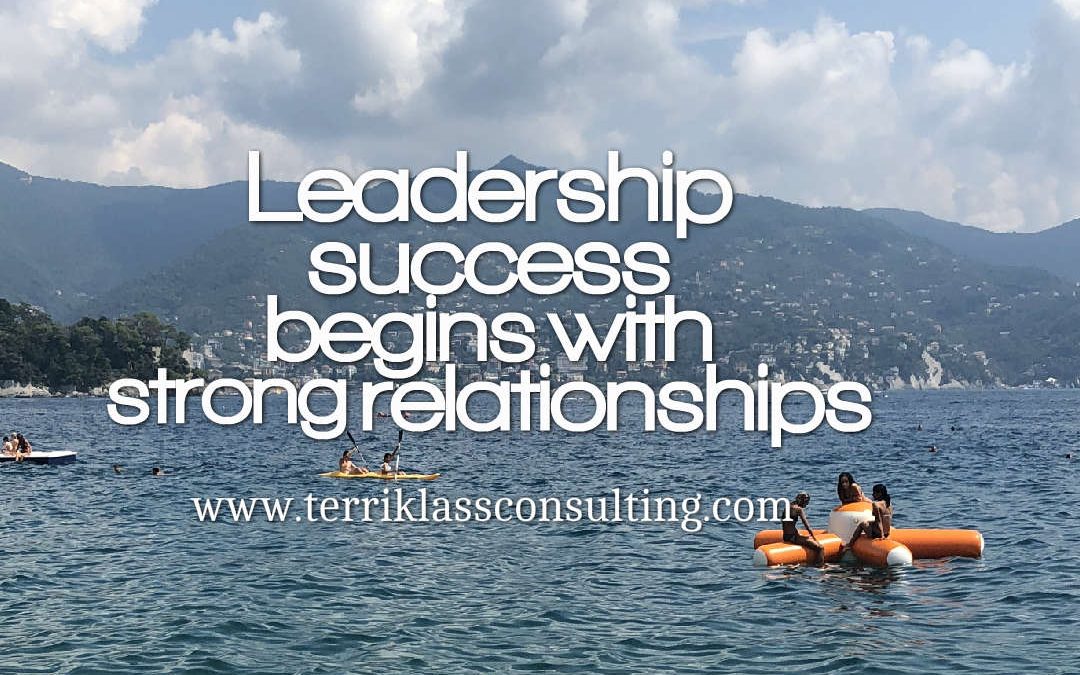What would you say is the linchpin of influential leadership? Sure there are many important skills that go into successful leadership such as powerful communication and laser-focused execution. Yet there is one overriding element that can lead to a leader’s impact or demise and that is their ability to cultivate meaningful relationships.
In one organization that I worked with there was a total breakdown of the senior team relationships. There was continual conflict where leaders weren’t listening to one another and were running off with their own selfish agendas. Each leader felt entitled to pursue their client concerns without regard to any other firm issues. Needless to say that there was a total breakdown of trust and connection with one another.
Without strong relationships, these senior leaders were steering their organization into confusing waters. They realized they had to make a change and that change was fixing their broken connections with each other.
Here are four foolproof ways leaders build relationships:
1. ADMIT THE WORK RELATIONSHIPS ARE DYSFUNCTIONAL
At first the company I was hired by wasn’t even recognizing that they had a problem with each other. Sales were good so they weren’t seeing what was happening with their team members. The reason they woke up was that they started to lose good talent. People were leaving and they couldn’t stop the revolving door.
Being clear on why a leadership team isn’t performing in a unified way can help any organization get a handle on their missing pieces. Look around. Be the person to stand up and say- “This is a dysfunctional group who needs help in interacting with each other. We are not all moving in the same direction.”
2. BEGIN WITH DEVELOPING A LEVEL OF TRUST
To address a team of leaders that are off in many different priorities, the first stop has to be cultivating a level of trust. Without a foundation of trust, there will never be strong relationships. Some strategies to develop trust may include:
- Getting to know each leader better by asking them about their life outside of work.
- Sharing challenges they each may be facing personally or professionally.
- Finding out who has helped them along the way and what that meant to them.
[Tweet “To overcome a dysfunctional team begin with building a level of trust.”]
3. CREATE A NEW SET OF NORMS
When I worked with this senior team it became apparent that we needed to develop a better way to communicate and engage in healthy conflict. The old way of doing things and resolving issues wasn’t helpful and just tore the group apart. The decision was to brainstorm together a new set of norms to interact with one another and share disagreements. Once we spelled out clearly how to interface with one another there was a sense of relief. Everyone would be heard and validated. No one leader would take charge and bully others.
[Tweet “A great way to deal with conflict is to create guidelines on how to disagree.”]
4. ROLL OUT TO REST OF ORGANIZATION
In order to make this change and demonstrate the new senior leadership strategy and priority on relationship building it needed to be shared with the entire firm. The leaders also had to walk the walk.
- A firm-wide gathering took place to share their new guidelines.
- They worked with team members in how to resolve conflict at all levels.
- Modeling the new norms everyday was critical.
Guess what? Their relationships with each other and their team members are as solid as ever.
What ways have worked for you in building strong relationships?



I agree – relationships are the cornerstone of everything and furthermore, change happens through relationships, not in vacuums. We can each decide to change as individuals, but as you suggest, the way we engage as a team and with each other that creates a meaningful shift.
I like that your fourth step is to share the new priority on leadership relationships, it’s important to roll it out as a key value for the entire org. It’s easy to say things behind closed doors but making priorities public, helps drive accountability.
Alli
I love your point that change happens though relationships! That is so true. We all know that for teams or organizations to refocus in a new direction it takes the people to make it sustainable. We can only be strong leaders if we cultivate our connections with care.
Thanks Alli for keeping our conversation going!